A great team start with a great leader. This involves setting goals for the team, communicating the mission, setting proper systems and standards and leading by example, Team motivation- Simple recognition of your team’s efforts and celebrating their achievement can go a long way.
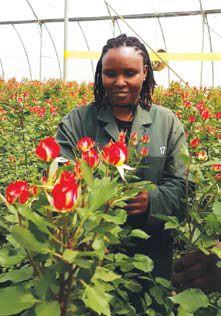 Who is Nancy Kurgat? Describe yourself as concisely as you may.
Who is Nancy Kurgat? Describe yourself as concisely as you may.
Nancy Kurgat is the production and technical manager, Sian Agriflora. She is also a team leader and has over 15 years experience in the floriculture sector. She has a training in Horticulture (Egerton University), Business & strategic management (Moi University) and several in job trainings on supervisory and leadership among others. Over the years, she has grown and progressed through the ranks from supervisory level to management level.
Ladies have a natural affinity for the world of flowers, and show much greater appreciation for it than men do. Even then, very few go about establishing their careers in the flower production industry, like you have done. What spurred you to do so? Any role model or someone who inspired you?
My role model in the industry is Mr Andrew Wambua, the General Manager of Molo River who was my boss when I first joined the industry at Equator flowers. I attribute a lot of my success to the first trainings and mentorship I attained from him. I cannot forget our Chairman Mr. Micah Cheserem whose leadership really inspired and geared me to another level of leadership and creativity. I have not words to express my gratitude other than a big thank you.
In addition, it has been noticed by men of all ages is the affinity of women towards flowers; the freshness, gorgeousness and the innocent blooms have always been a dire favourite of women. Even with this love for flowers women perceived the career as hard for to pursue because of the associated obstacles for instance, growing is tasking and needs a lot of commitment in terms of time. Most women will wish for careers that ensure they are home early and over the weekends to take care of the family.
I joined the industry immediately after I cleared my studies and I must say that I also had the same reservations but after working for some time I realized that I enjoyed more than I thought! I cheered myself that, “YES, I CAN, and will be, a significant part of the floriculture industry in spite of all the obstacles.”
 Corteva Agrisciencies opened the third in a series of new offices in Africa, parts of plans to increase sales on the continent within the next few years. The growth plan are based on two-pronged strategy that centres around offering technical support and experience to farmers and other agricultural professionals locally.
Corteva Agrisciencies opened the third in a series of new offices in Africa, parts of plans to increase sales on the continent within the next few years. The growth plan are based on two-pronged strategy that centres around offering technical support and experience to farmers and other agricultural professionals locally.
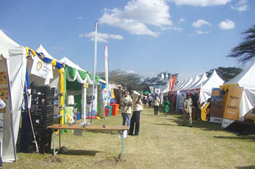 Even though the rose industry has been under pressure over the last year, the attendance at the Naivasha Horticultural Fair does not seem to be affected. As statistics show, this year it even seems to become the biggest edition so far. “It is once again receiving plenty of bookings certainly on par with other years”, says Naivasha Horticultural Fair Chairman Richard McGonnel.
Even though the rose industry has been under pressure over the last year, the attendance at the Naivasha Horticultural Fair does not seem to be affected. As statistics show, this year it even seems to become the biggest edition so far. “It is once again receiving plenty of bookings certainly on par with other years”, says Naivasha Horticultural Fair Chairman Richard McGonnel.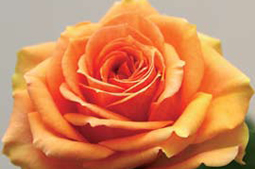 Overproduction, low demand, high fertilizer prices, VAT that isn’t refunded by the government, unfavourable exchange rates. When talking with the growers, it’s the combination of these factors that contribute to the challenging year that many Kenyan rose growers are experiencing. Notwithstanding the Kenya Flower Council predicting a 20 percent growth of value of Kenya’s flower exports over 2019, with the summer season around the corner these circumstances are not likely to improve any time soon.
Overproduction, low demand, high fertilizer prices, VAT that isn’t refunded by the government, unfavourable exchange rates. When talking with the growers, it’s the combination of these factors that contribute to the challenging year that many Kenyan rose growers are experiencing. Notwithstanding the Kenya Flower Council predicting a 20 percent growth of value of Kenya’s flower exports over 2019, with the summer season around the corner these circumstances are not likely to improve any time soon.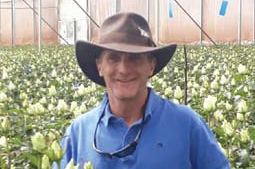 “We want to be remembered as the farm which integrated their farming systems to enable sustainability both environmentally and socially to conserve soils for the future generations while improving livelihoods of people in the community” asserted Craig General Manager Kisima Floriculture Kisima which sits at an altitude of 2400M produces large headed premium roses which are sold through the auction. They export over 20 million stems annually, being a smallholder grower with less than 30ha to survive in the sector of big giants; you have to design a unique way of operations. For this, Kisima believes in two major unique ways; cutting cost innovatively and practicing environmentally and socially sustainable farming.
“We want to be remembered as the farm which integrated their farming systems to enable sustainability both environmentally and socially to conserve soils for the future generations while improving livelihoods of people in the community” asserted Craig General Manager Kisima Floriculture Kisima which sits at an altitude of 2400M produces large headed premium roses which are sold through the auction. They export over 20 million stems annually, being a smallholder grower with less than 30ha to survive in the sector of big giants; you have to design a unique way of operations. For this, Kisima believes in two major unique ways; cutting cost innovatively and practicing environmentally and socially sustainable farming.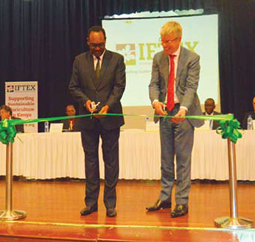 IFTEX which was launched in 2012 has grown tremendously to be a renowned exhibition brand worldwide. Currently it attracts more than 250 both national and international exhibitors ranging from; growers, buyers, breeders, suppliers, regulatory and compliance institutions and logistics. Over time IFTEX has contributed to promotion of Kenyan cut flowers which its demand continues to rise in world market. This action has enabled the Kenyan flowers to compete well with other giants like Ecuador, Colombia and also Ethiopia who are coming up well.
IFTEX which was launched in 2012 has grown tremendously to be a renowned exhibition brand worldwide. Currently it attracts more than 250 both national and international exhibitors ranging from; growers, buyers, breeders, suppliers, regulatory and compliance institutions and logistics. Over time IFTEX has contributed to promotion of Kenyan cut flowers which its demand continues to rise in world market. This action has enabled the Kenyan flowers to compete well with other giants like Ecuador, Colombia and also Ethiopia who are coming up well. Who is Nancy Kurgat? Describe yourself as concisely as you may.
Who is Nancy Kurgat? Describe yourself as concisely as you may. 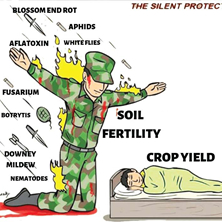 Getting crops off to a good start is critical for achieving high yields. During this early stage of growth, seedlings are especially vulnerable to many environmental and biological stresses. Protecting plants from stress and disease begins with providing balanced nutrition from planting through harvest. The critical link between plant nutrition and disease resistance has become apparent as the frontiers of plant health are better understood. A few of these examples are explained here:
Getting crops off to a good start is critical for achieving high yields. During this early stage of growth, seedlings are especially vulnerable to many environmental and biological stresses. Protecting plants from stress and disease begins with providing balanced nutrition from planting through harvest. The critical link between plant nutrition and disease resistance has become apparent as the frontiers of plant health are better understood. A few of these examples are explained here: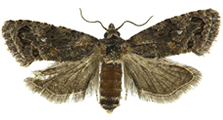 The Kenya Plant Health Inspectorate Service (KEPHIS) is working with over 200 horticultural produce exporters to the European Union (EU) and Australian markets to formulate strategies to curb False Codling Moth (Thaumatotibia leucotreta) pest which has led to some rejection of the country’s products at international markets.
The Kenya Plant Health Inspectorate Service (KEPHIS) is working with over 200 horticultural produce exporters to the European Union (EU) and Australian markets to formulate strategies to curb False Codling Moth (Thaumatotibia leucotreta) pest which has led to some rejection of the country’s products at international markets.